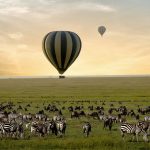
When is the Great Migration in Tanzania?
August 25, 2025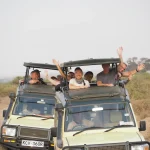
Best Tanzania Safari for Families with Kids
September 2, 2025Why Does the Great Migration in Africa Occur?
The Great Migration in Africa represents one of the most extraordinary wildlife phenomena on the planet. Every year, millions of wildebeest, zebras, and other herbivores traverse the Serengeti-Mara ecosystem in a vast circular journey. This migration is a remarkable natural cycle primarily driven by the search for fresh food and water. Understanding why the Great Migration occurs unlocks deeper appreciation for this spectacular movement and enhances your experience during a Kenya Wildlife Safari or Tanzanian adventure.
Deks Safaris & Tours Ltd explores the key drivers behind the migration, the seasonal rhythms that guide it, and the complex ecological relationships that sustain it. This article answers common questions such as “What causes the Great Wildebeest Migration in Kenya?” and offers insights into the ecosystem’s delicate balance.
The Role of Rainfall and Grass Availability in the Great Wildebeest Migration
At the heart of the Great Wildlife Migration lies a simple but powerful need: access to fresh, nutritious grass. The herds move continuously following seasonal rains that rejuvenate grazing lands across the Serengeti in Tanzania and the Maasai Mara in Kenya. During dry spells, grasslands become depleted, forcing the animals to migrate toward areas where rains have sparked new growth. This cyclical movement ensures their survival, enabling them to consume mineral-rich grasses critical for health and reproduction.
The relationship between rainfall and grass availability is dynamic. Different parts of the Serengeti-Mara ecosystem receive rains at varying times, creating a moving mosaic of lush pastures. Wildebeest and zebras instinctively track this changing landscape, adjusting their routes annually. Therefore, while the migration follows a broad pattern, it does not stick to a rigid path. This flexibility allows herds to adapt to variations in weather, a vital trait in the face of climate fluctuations.
Travelers often wonder, “When is the Great Migration in Tanzania and Kenya?” Understanding the rainfall-driven cycle clarifies why specific months bring peak wildlife activity in certain locations. For example, the southern Serengeti becomes a lush feeding ground during the rainy season from January to March, attracting vast herds.
The Crucial Calving Season in the Southern Serengeti
One of the most critical phases of the Great Migration in Africa is the calving season, occurring predominantly in the southern Serengeti plains between January and March. During this time, hundreds of thousands of wildebeest calves are born within a narrow timeframe. This synchronized birthing offers safety in numbers, reducing the chance of individual calves falling prey to predators.
The southern plains provide an ideal environment for calving due to abundant fresh grass and water, crucial for nursing mothers and newborns. The nutrient-rich grasses enable female wildebeests to produce high-quality milk that sustains calves during their vulnerable early days. This period represents the foundation for the migration’s continued success, as healthy calves grow into the next generation of migrating adults.
For safari guests asking, “When does the Great Wildebeest Migration in Kenya and Tanzania calve?” the southern Serengeti’s rainy months offer the best answer. This time combines the thrill of witnessing newborn life with the dramatic presence of predators drawn by the concentration of vulnerable prey.
Safari lodges and camps around Ndutu offer excellent access to calving grounds, and many incorporate guided walks or vehicle safaris tailored to viewing these events safely and respectfully. Cultural visits nearby allow guests to learn from local Maasai communities about coexistence with wildlife, further enriching the experience.
Predator-Prey Dynamics: The Pulse of the Great Migration Ecosystem
The Great Wildlife Migration sets the stage for intense predator-prey interactions that define the Serengeti-Mara ecosystem. As the herds traverse the plains, predators such as lions, cheetahs, leopards, and crocodiles follow closely. These carnivores depend heavily on the migration for food, shaping their hunting strategies around herd movements and vulnerabilities.
During river crossings—particularly the Mara and Grumeti Rivers—crocodiles lie in wait for the weakest animals attempting to cross. On land, lions and hyenas use stealth and power to ambush calves or isolated adults. The mass movement of thousands creates a balance: while individual animals face danger, the sheer size of the herds provides safety in numbers, diluting individual risk.
This predator-prey cycle maintains ecological equilibrium. Predators control herbivore populations, preventing overgrazing and promoting healthy grassland regeneration. Meanwhile, the migration’s movement fertilizes the soil through dung, further enhancing pasture quality.
Visitors planning Kenya Safaris often ask, “What can I expect to see regarding predator activity during the Great Migration?” The answer varies by season and location, but Deks Safaris & Tours Ltd ensures guests witness key moments through expert-guided safaris that highlight this dynamic interaction.
Predictable Yet Flexible: The Migration’s Changing Routes and Timing
Although the Great Migration in Africa follows a generally predictable circular route through Tanzania’s Serengeti and Kenya’s Maasai Mara, the exact paths and timings vary annually. This variability results from changes in rainfall patterns, grass growth, and water availability.
Each year, herds may alter their traditional paths slightly to access the best grazing grounds. This adaptability is critical, especially in the face of changing climate conditions that can affect the onset and duration of rains. Consequently, tour operators and wildlife experts closely monitor environmental factors to update migration tracking.
For travelers planning a Kenya Wildlife Safari, this means flexibility is key. Choosing an experienced operator like Deks Safaris & Tours Ltd allows adjustment of itineraries in real-time, ensuring clients experience the migration at its most vibrant stages.
Understanding this fluidity also answers common questions such as, “When is the best time to visit the Great Wildebeest Migration in Kenya?” It is not only about fixed calendar dates but also about responsive travel plans aligned with nature’s rhythms.
The Ecological Importance of the Great Migration
The impact of the Great Wildebeest Migration extends beyond the animals themselves. This cycle plays a fundamental role in maintaining the health and productivity of the Serengeti-Mara ecosystem. Grazing by massive herds controls vegetation growth, preventing bush encroachment and maintaining open grasslands that support diverse wildlife.
The herds’ movement distributes nutrients across vast areas. Their dung fertilizes the soil, stimulating plant growth and supporting insects and smaller herbivores. This nutrient cycling creates a robust food web that sustains numerous species.
Moreover, the migration indirectly supports local human communities. Healthy ecosystems foster tourism, which generates revenue, employment, and infrastructure development. Many safari lodges, including those operated by Deks Safaris & Tours Ltd, actively contribute to conservation and community projects, promoting sustainable tourism.
This synergy between wildlife and humans highlights why understanding why the Great Migration occurs is vital for travelers committed to responsible tourism. Every visit contributes to preserving this incredible phenomenon for future generations.
What to Pack for a Kenya Safari During the Great Migration?
Proper preparation significantly enhances your Kenya Safari experience, especially during the Great Migration season. Knowing “What to pack for a Kenya Safari?” ensures comfort, safety, and readiness for diverse conditions.
Pack lightweight, breathable clothing in neutral tones such as khaki, beige, or olive. These colors help blend into the environment, avoiding disturbance to wildlife. Include layers for cool mornings and evenings, along with sun hats and sunglasses for midday heat.
Don’t forget sturdy, comfortable walking shoes for exploring around lodges and for optional walking safaris. Bring binoculars and a quality camera with zoom lenses to capture the incredible wildlife moments.
Insect repellent, sunscreen, and personal medications complete the essentials. Some travelers include rain jackets during the short wet season or waterproof bags to protect electronics.
Deks Safaris & Tours Ltd provides personalized packing lists tailored to the specific time of year and destinations to ensure every guest is fully prepared to enjoy the Great Wildebeest Migration in Kenya and Tanzania.
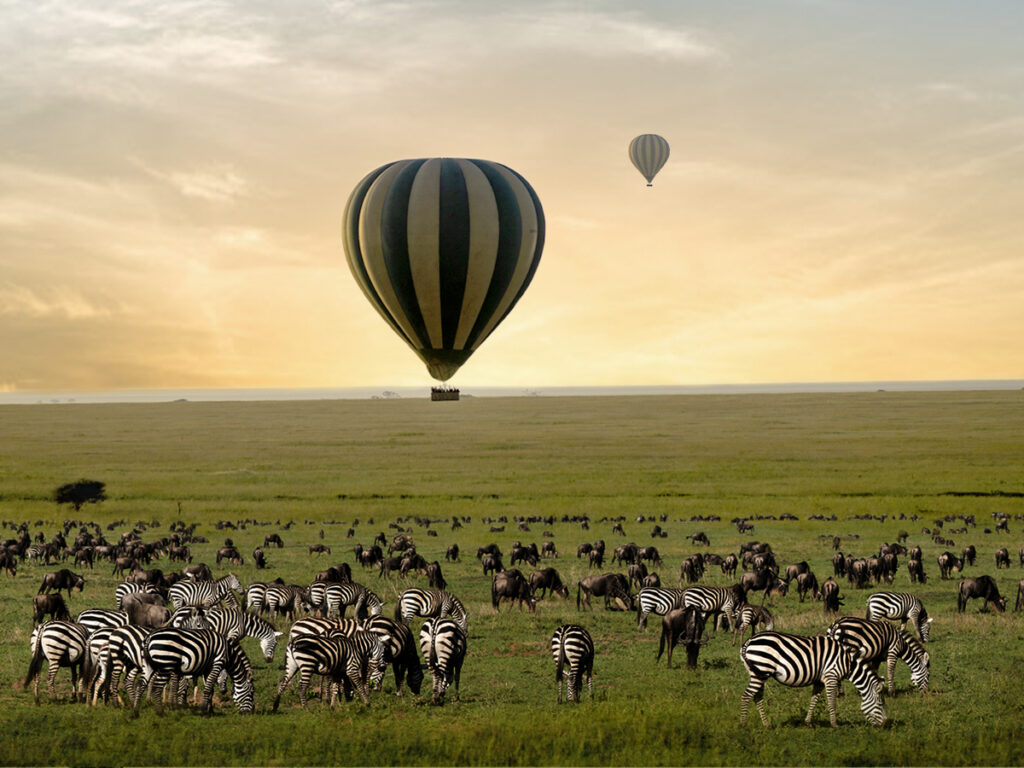
Why Does the Great Migration in Africa Occur?
Cultural Experiences Around Safari Lodges: Enriching Your Migration Safari
While the Great Migration forms the centerpiece of any wildlife safari, cultural interactions enhance the overall journey. Around many safari lodges, especially in Kenya’s Maasai Mara and Tanzania’s Serengeti regions, guests can engage with local communities.
The Maasai people, famous for their vibrant attire and traditions, welcome visitors to learn about their pastoral lifestyle. Visitors often participate in cultural visits where they witness traditional dances, learn about beadwork, and visit local homes. These experiences build cross-cultural understanding and respect.
In Tanzania, similar opportunities exist with communities such as the Hadzabe hunter-gatherers or the Datoga pastoralists. Exploring these cultures adds depth to your Kenya Wildlife Safaris or Tanzanian adventures, making the trip more meaningful.
Many lodges partner with local groups to support education and conservation, ensuring tourism benefits both nature and people. Travelers seeking authentic encounters find these cultural components unforgettable.
Understanding Why the Great Migration in Africa Occurs
The Great Migration in Africa occurs due to a powerful combination of ecological factors centered around food, water, reproduction, and survival. Rainfall-driven grass availability triggers the movement, while calving seasons and predator-prey relationships define the migration’s phases. This continuous cycle maintains the Serengeti-Mara ecosystem’s vitality, benefiting wildlife and human communities alike.
For travelers asking “Why does the Great Migration occur?” the answer lies in nature’s intricate balance, which sustains one of the world’s most stunning wildlife phenomena. Deks Safaris & Tours Ltd invites you to experience this spectacle with expert guidance, comfortable accommodations, and enriching cultural activities. Whether your dream involves witnessing the calving season, thrilling river crossings, or engaging with local traditions, understanding these drivers enhances your safari’s impact.
Plan your Kenya Wildlife Safari with Deks Safaris & Tours Ltd and discover why the Great Wildebeest Migration in Kenya and Tanzania captivates visitors every year. Your adventure awaits.
Exceptional East Africa Gorilla Trekking & Wildlife Safari Holidays
- Uganda Primate Fly-In Safari 6-Day Experience
- 8-Day Uganda Big Five Safari Experience
- 9-Day Uganda Wildlife Safari Tour
- Kenya Uganda Rwanda 10-Day Tour
- 10-Day Uganda Safari Experience
- Kenya, Uganda, & Rwanda 12-Day Safari
- 14-day-all-inclusive-rwanda-wildlife-safari
- Kenya Tanzania Uganda 15-Day Safari
- 15-Day Uganda Wildlife & Primate habituation safari
- 6-Day Uganda Habituation Safari

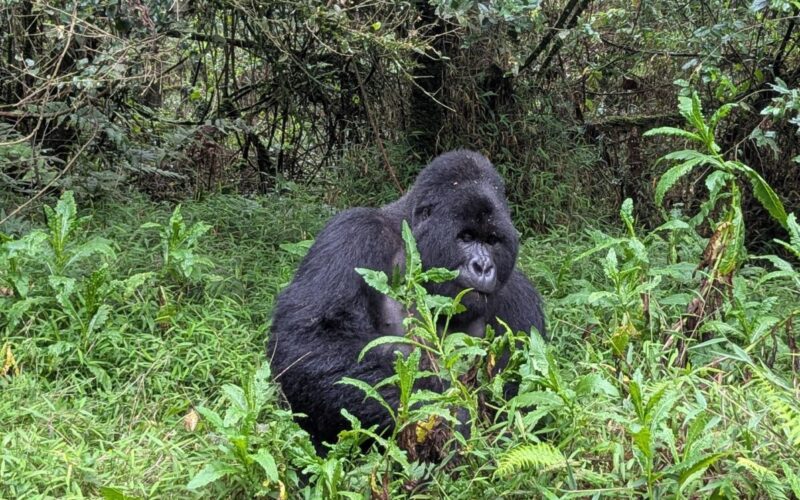
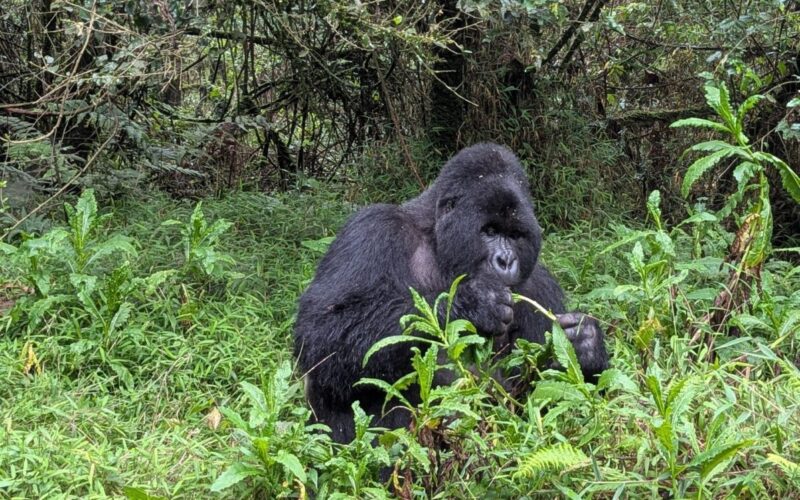
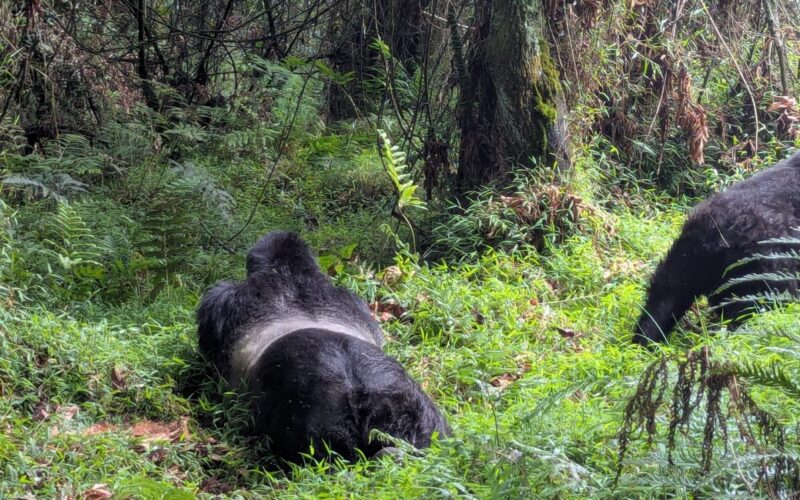

6 Comments
This is really interesting, You’re a very skilled blogger. I’ve joined your feed and look forward to seeking more of your magnificent post. Also, I’ve shared your site in my social networks!
Great article, thanks for sharing such valuable insights! 🙌 I really appreciate the way you explained the topic so clearly and made it easy to understand. It’s rare to find content that is both informative and practical like this. By the way, I recently came across a helpful platform called profis-vor-ort.de — it connects people quickly with local experts and services in Germany. I think it could be a great resource for anyone interested in finding trustworthy professionals nearby. Keep up the great work, I’ll definitely be following your future posts!
Really well-written article! 👏 I enjoyed the way you broke down the topic—it feels very genuine and helpful, not just theory. The practical tips make it easy for readers like me to connect and actually take something useful away.At meinestadtkleinanzeigen.de , we’re building a directory and classifieds platform in Germany where people can discover businesses, services, and opportunities across many categories. That’s why I especially value content like yours, because it shows how sharing knowledge online can really create connections.Keep up the great work—I’ll definitely be following along for more insights! 🚀
Fantastic read! 👏 I really appreciate how clearly you explained the topic—your writing not only shows expertise but also makes the subject approachable for a wide audience. It’s rare to come across content that feels both insightful and practical at the same time. At explodingbrands.de we run a growing directory site in Germany that features businesses from many different categories. That’s why I truly value articles like yours, because they highlight how knowledge and visibility can create stronger connections between people, services, and opportunities.Keep up the great work—I’ll definitely be checking back for more of your insights! 🚀
I am very appreciative of the owner of this web page for sharing this outstanding piece of writing in this space.
Excellent breakdown, I completely agree with the challenges you described. For our projects we started using an AI-driven system called AI link building by OptiLinkAI, and it has simplified the entire process. It’s refreshing to see technology finally making link acquisition smarter, not just faster.